iOS Universal, Android •
After posting yesterday’s mammoth strategy guide for Czech Games‘ awesome port of Through the Ages, I was asked by several people to go over one of the game’s most frustrating mechanisms, Corruption. Let’s do this!
We’re all familiar with corruption in real and fictional settings. Be it politicians greasing their palms while making their donors rich or Nucky Thompson giving public contracts to his lackeys and pocketing the tax dollars himself, the bottom line is that money targeted for the public good isn’t getting to its intended destination.
Corruption in Through the Ages works in the same way. If your civilization stockpiles ore and/or food instead of spending it, some will get siphoned off for the fat cats instead of being available for your civilization’s health.
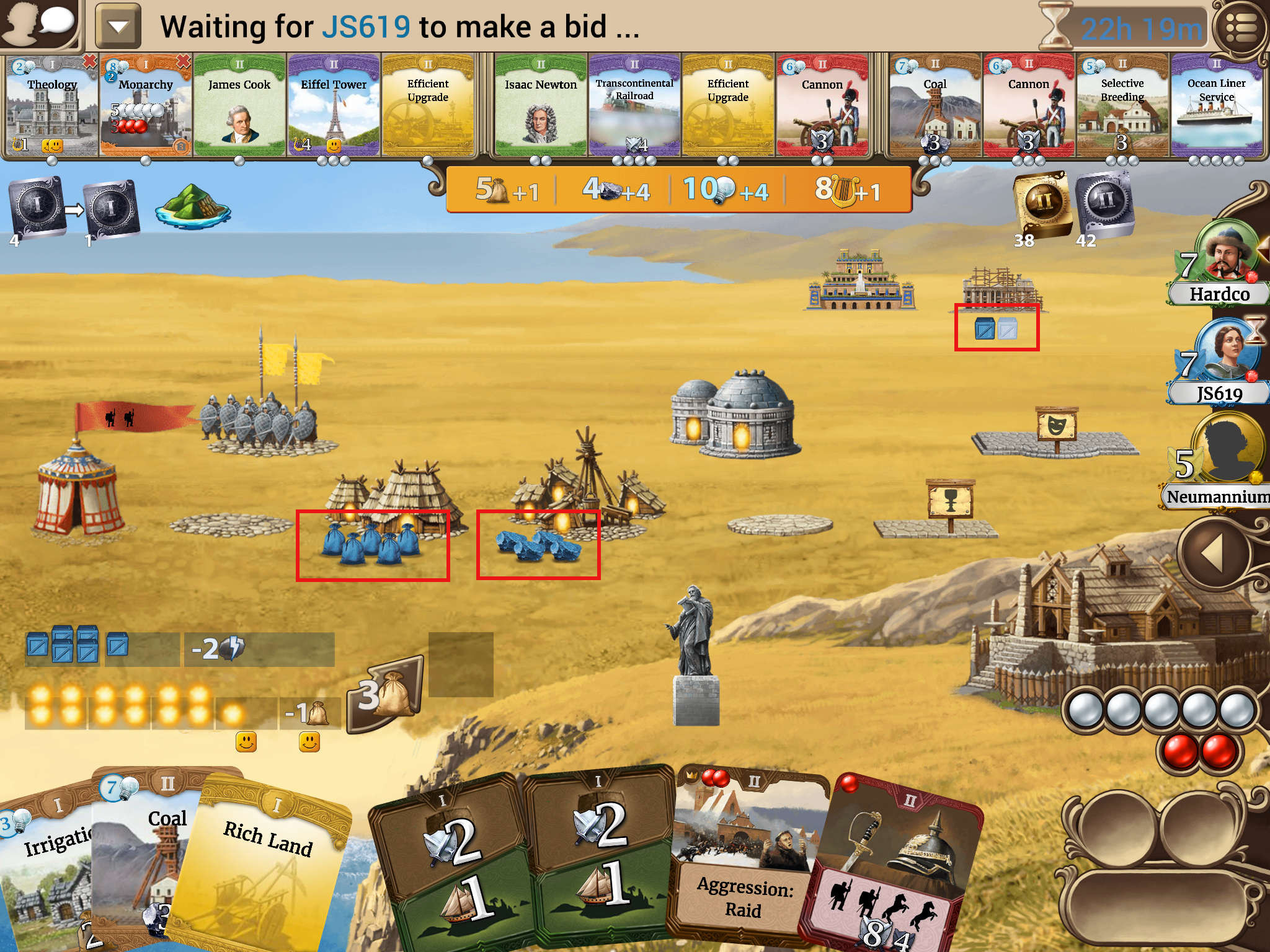
All this drama revolves around what we call the “Blue Bank”. This bank houses the blue cubes that act as resources (food, ore, and wonder stages) during the game. If you have a little ore icon outside your mine, that’s equivalent to one blue cube from your Blue Bank. The Blue Bank is limited, however, and as those blue cubes are moved from the Bank to mines, farms, and wonders, your Bank becomes more and more empty.
Your Blue Bank is broken up into 3 sections (-2, -4, and -6). If any of those sections are empty at the end of your turn, you’ll face corruption. The goal, therefore, is to spend enough each turn to prevent corruption from cutting into your profits. As long as you spend enough ore and food each turn to have at least one cube in the far-right section of the Blue Bank, you will have zero corruption that turn. Of course, that’s easier said than done. Some turns you just won’t be able to spend enough, either through a lack of available workers or earning too much ore/food via Events to be able to spend it all with your available actions. It happens, and isn’t the end of the world, but you should always try to spend as much as possible to avoid having your next turn be subpar.
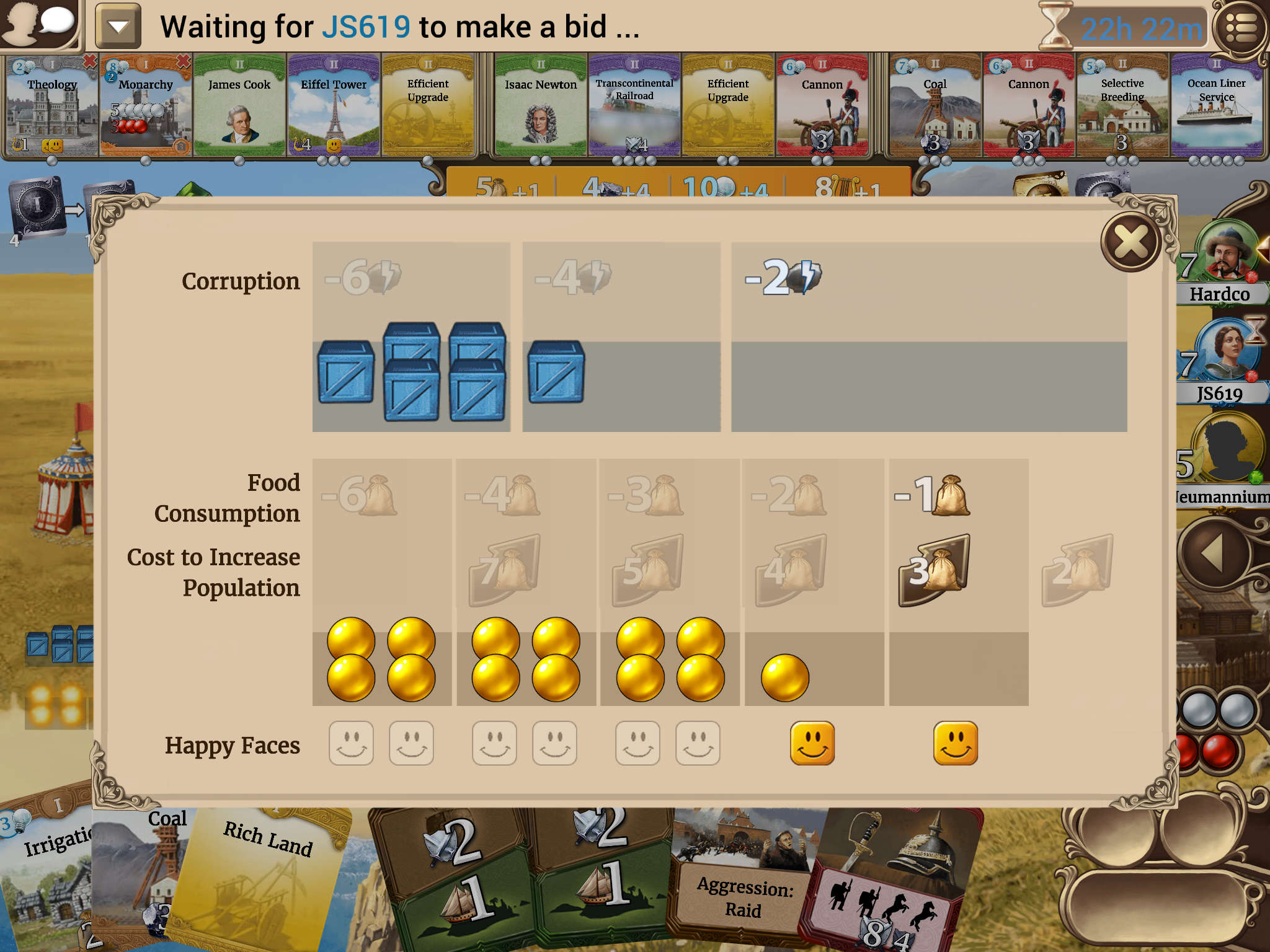
One confusing part of Corruption can be Wonders. Wonders are built in stages, each costing a certain amount of ore. There are times when I’ll sink a bunch of ore into a Wonder with the goal of evading Corruption for the turn, and yet I still don’t have enough blue cubes in my Bank at the end of the turn. What happened? Each time you complete a stage of a Wonder, one blue cube is placed on that card to represent the materials that go into building such a huge project. Thus, if you’re spending two ore on a Wonder stage, remember that one of those cubes will stay on the Wonder, meaning you’re only getting one blue cube back into your Bank. You get all the blue cubes back when a Wonder is completed, however, so finishing a Wonder will usually free you up from Corruption’s grasp.
Besides spending, there are other ways to prevent Corruption. The biggest is by upgrading your farms and mines. As you upgrade these facilities, each blue cube is worth more and more ore. For example, if you have one Oil mine producing 5 ore, that’s one cube. Having five Bronze mines to generate the same income will cost you 5 cubes from your Blue Bank. Thus, upgrading does more than put more ore in your pocket, it also helps you battle Corruption.
Other ways to mitigate Corruption come in the form of Colonies, Wonders, and Special Technologies. Let’s look at the separately.
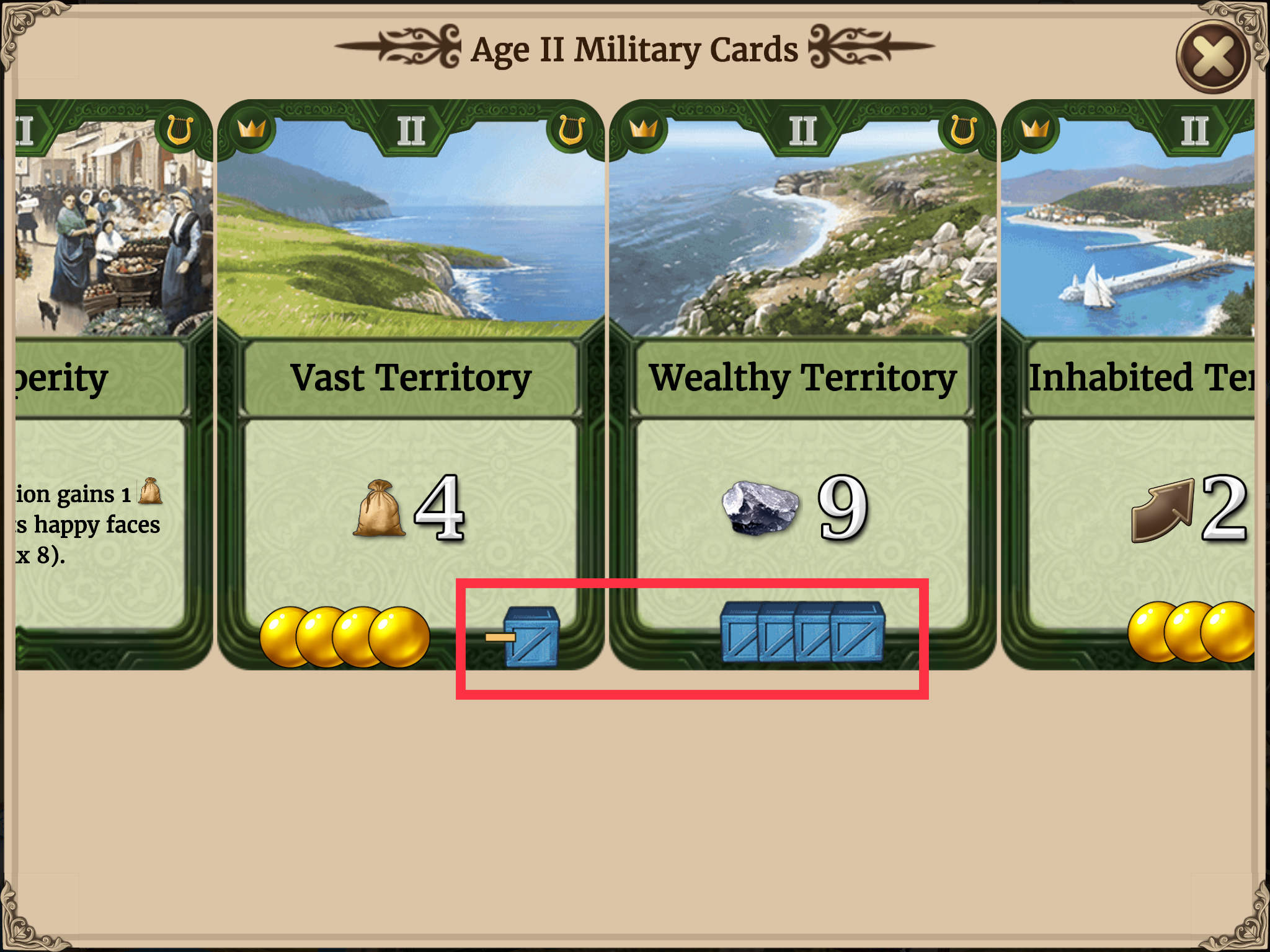
Colonies
The two colonies you’ll want to look at if you want to mitigate your corruption issue are Wealthy Territory and Developed Territory. As you can see in the screenshot above, both add cubes to your Blue Bank. (Icons on the bottoms of Territories are “permanent bonuses”. The Icon in the center is something that happens once when the Territory is won, but the icons on the bottom benefit you the entire game unless the Territory is lost.) These will give you more cubes to add to mines/farms before you deplete one of the Blue Bank’s sections. You’ll want to avoid Vast Territories (only if you’re worried about corruption) as they will remove blue cubes from your Blue Bank, making corruption more likely to happen.
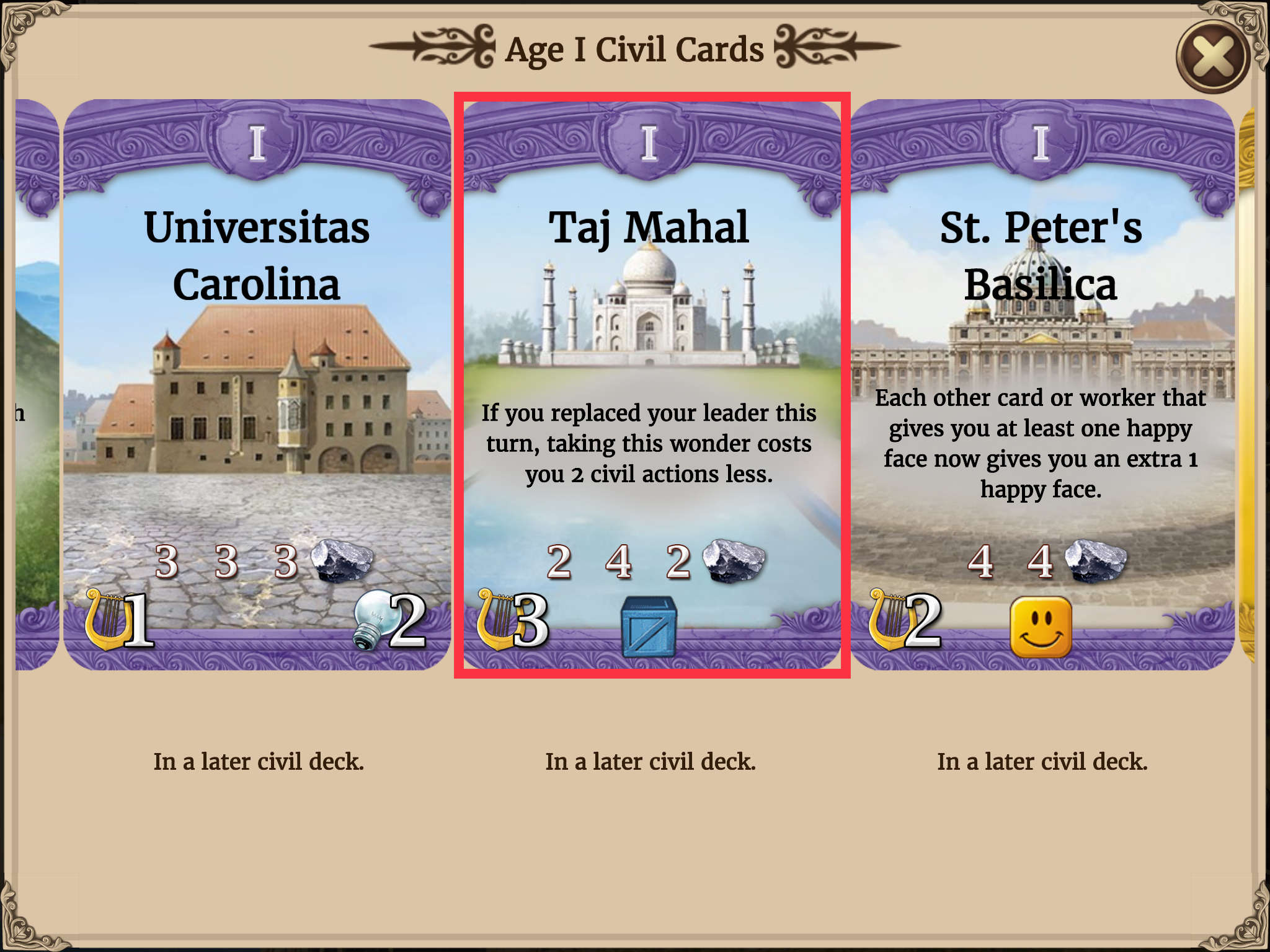
Wonders
There’s only one Wonder that helps battle Corruption, and that’s the Taj Mahal. It only adds one blue cube to your Blue Bank, so battling corruption isn’t its main focus, but with an additional +3 to your Culture each turn, the Taj Mahal is still a Wonder worth considering.
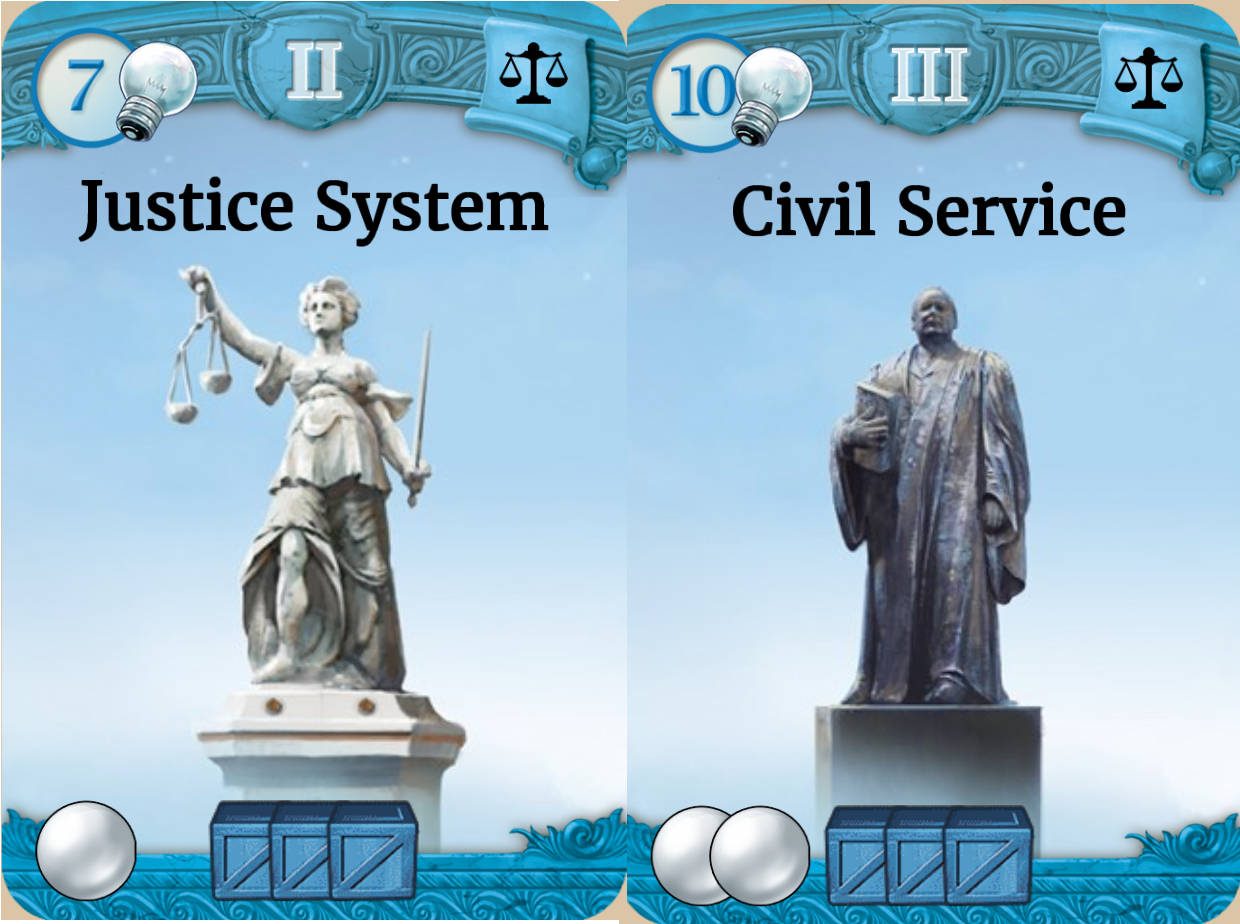
Special (Blue) Technologies
The Blue Technology cards can be incredibly helpful in battling Corruption starting in Age II with Justice System. Not only do you get more Civil Actions, which are always helpful, you also get 3 blue cubes added to your Blue Bank. Hooray!
If you miss out on Justice System in Age II, you can always hold out for Civil Service in Age III. For only 3 more Science, you get the 3 blue cubes and an extra Civil Action. Keep in mind that you can only have one Special Technology of each type in play at once. Thus, if you buy Justice System in Age II, you’ll get 3 blue cubes and one extra Civil Action. If you then buy Civil Service in Age III you discard Justice System, meaning that the only benefit would be gaining 1 more Civil Action (Justice System has 1 Civil Action and 3 Blue Cubes, Civil Service has 2 Civil Actions and 3 Blue Cubes). In other words, you don’t need to research both unless you’re just trying to prevent your opponents from picking them up.
Corruption can be a huge pain when trying to build your empire. Losing 2 or 4 ore in a turn can prevent you from having enough to build whatever your grand strategy was honing in on. From my experience, you cannot always avoid it. Even with the best intentions, sometimes you’ll be unable to spend enough and, sometimes, it’s worth taking the Corruption hit to ensure you can draw that one card you really need from the card row with your last Civil Action rather than buying another Warrior.
Anything I missed, or anything else you’d like me to cover in regards to Through the Ages? I’m planning on ranking all the Leaders and Wonders later this week, but can cover whatever you’re curious about if that would be more helpful. Let me know!

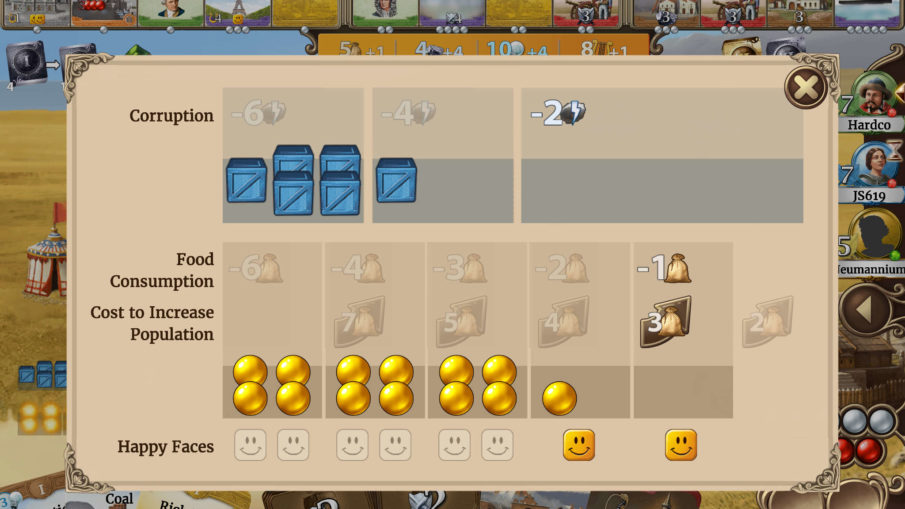

Can I request a strategy guide entitled “How not to lose to @Hardco”?
As you’re well aware, that topic is beyond my expertise.
There’s a few other key points about corruption that I fall into on occasion:
If you have decent production, but low food, ensure that you have potential upgrades. Before the Age 2 governments come around, you don’t have enough CA to grab a Wonder and dump production to avoid corruption.
Along with this, Michelangelo is sometimes valuable just for his ability to get cheap wonders, even if you can’t abuse his culture power. Even more so if you can get Taj Mahal for an extra 2 CA less.
If a bunch of Age A events have triggered giving you a ton of extra resources to deal with on your turn, consider corruption before triggering another Age A event!
Plan your revolutions with corruption in mind. If you can take a turn getting a couple free workers, or develop some additional military tech, your revolution will seem to have no downside when you have everything set up to spend all your resources developing military that turn.
Where do the yellow dots from colonies go? In poporinto the pop bank?
Colonists are returned to the population bank. So you should try to be aware of your food situation if you need to replace the guy immediately. Or when to use colonization as a way to free up some warriors no longer needed for your tactics. Keep in mind colonizing can be used to improve your food production and happiness issues, even if you aren’t gaining population from the colony.